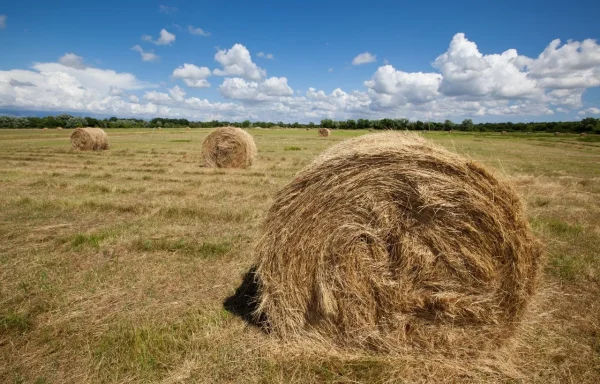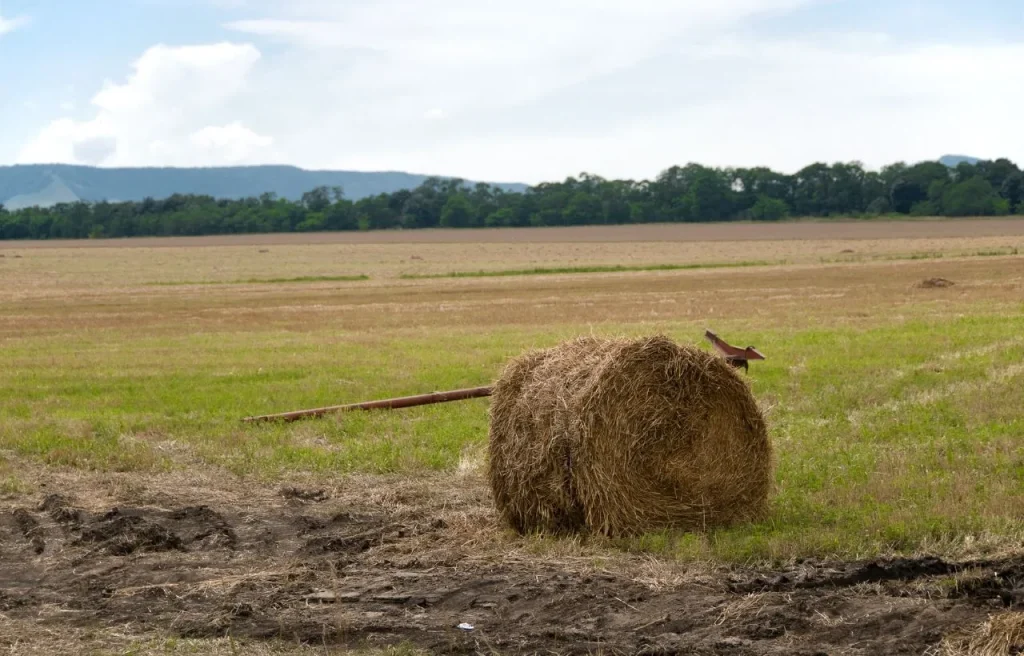Hi garden folks, welcome to gardening’s core.
What happens when you would love to set up a garden but you don’t have any fertile soil? Or you are not capable to start the garden bed for some reason. Well, at that time you can come up with straw bale gardening problems and solutions.
Many of you have heard about this particular gardening type. There are rooftop gardening, garden pots, house plants, raised beds and many more gardening stereotypes. But can you have a lovely harvest and blossom without soil? Definitely, and this is possible with straw bale gardening. It’s not like pie in the sky that you are growing your veggies and fruits without soil. It actually happens and runs well with straw bale.
So, without any further due, let’s have a broad overview about straw bale gardening, how you can start it off, how to maintain this and what are the straw bale gardening problems and solutions you might face.
Explore the golden soil today!
What is Straw bale gardening?
A better substitute for your soil garden when you have any problem with the soil is straw bale gardening. One gardener can use the decomposed straw grains to start straw bale gardening. However, there are two types of gardening- one is with straw gardening and another is hay gardening. Basically, the bale is of two kinds. The straw bale comes from the grain industry that consists of barley, oats and wheat as the byproduct of these grains and also the suppressed stems of these grains. So, they are the type of bales found in the grain industry.
Okay, now the hay bales are cheaper than the straw bales and consist of drying seeds, and grasses. But there is a problem with the hay bale, it is not sustainable and within short time it becomes weedy and breaks down. Straw bale gardening was first introduced in the year 2005. Since then it has been very familiar to every gardener. It is famous in the Western USA.
So, a garden should go with straw bales rather than hay bales. The straw bale is easy to purchase from any garden center/ directly from the grain industry after the fall harvest.
You can find the usage of straw bales cheaper than raised-bed gardening.
How to start off straw bale gardening?
Well now that you are okay and happy with the straw bales, you need to place them in your garden. Gardeners can keep them whereas their choice, but it is good to have blocks, garden soil, or wheat fabric under your straw bale. Never use the straw bales in a singular portion. Always tie up 3-5 strands of straw bales together. The bale should be in a rectangular shape with the narrow shape of the twin parallel two the ground. It makes the straw bale strong and the bales do not fall apart.

Now you can use a layer of compost on your straw bale or make some tiny holes for your seedlings/ seed then put compost there and get ready for the harvest. However, regular gardeners love to sow seeds on straw bales because these are decomposed at a slow rate so, keep the plant roots warm and well-spread.
So, before planting the seed/ seedlings you must put the compost. Again, the straw bales are a good source of nutrients but you need to put regular fertilizer to boost your garden harvest.
Don’t worry if you are residing in a temperate region of the states because after you see your straw bales breaking down and have no use, don’t throw them out of your garden. Because these straw bales are very good mulch for your garden soil and still they keep nutrients. Again the straw bales have a good moisture-holding capacity.
So what are the thumb rules for straw bale gardening? Picking straw bales, placing and twining the bales, watering them thoroughly, composting, planting the seedlings, and then finally fertilizing, you are off to start your alternate gardening.
A gardener can keep choosing these straw bales over and over. But does it worthwhile? You can grow tomatoes, cucumber, corn, and even pumpkin in your straw bale garden. Okay, now that you have straw bales and the compost, you can expend 100to 120 dollars for a 2-meter square straw bale. Is it worth it? I would say yes because you can grow all your edibles here.
Why would you choose straw bale gardening?
- Straw bales are cheap for any gardener
- Easy to access from any garden store/ grain industry
- Needs little effort to set up at anywhere
- Biodegradable and has future use
- Can give relaxed gardening instead of bending down. You can just pluck off your harvests.
What are the problems with Straw Bale Gardening?
Moving on to the pros and cons of straw bale gardening. You can use this feasible and easygoing alternative for an edible harvest. Let’s enlist some of the major straw bale gardening problems-
- A good source of carbon but lack of nitrogen: The straws are mostly the dried grains of wheat after they are harvested. However, when you create a straw bale in your garden, you are actually adding wheat which is a great carbon source. Now, what happens to your underlying soil when you have a heavy carbon layer upon it? All microbes try to break down that carbon and consume all the nitrogen from your soil because the straw bales have less nitrogen. So, lack of nitrogen/ nutrients is one of the straw bale gardening problems. What’s the solution to it? You can use nitrogen fertilizers like chicken manure or other composts for your garden soil to have enough nitrogen for next season’s plants.
- A great alternative but a bit heavy: However, the next straw bale gardening problem is the straw bales are quite large and have lots of weight. So, some gardeners find it difficult to handle this.
- Straws contain persistent Agro chemicals: The next problem is straws are prone to spread many toxic substances. The wheat industries use a lot of herbicides and other chemicals to fight against the diseases but these remain in the dry straws. Eventually, the straw bales spread the toxic to your organic garden. So, try to find out industries that use less agr+ochemical for their production as a result you can save the organic touch of your green garden.
- Remember to plant lighter edibles: Though the straw bales can grow a generous amount of edibles for you but sometimes, the bales might get messy due to the weight of the edible. So remember to plant varieties of edibles that are lightweight and short in size. For example, the varieties of mushrooms, tomatoes and others.
- Becomes loose after rain: Straw bales are great mulches after their uses but when it gets the touch of rainfall, the straws start to lose up and become unorganized. As a result, the gardener needs to collect through all of them after the growing season.
Hence, straw bale gardening problems and solutions are like a package. Whenever, you face problems just try out the solutions like putting in a handsome amount of nutrients, collecting the bales from a trusted agro-industry, that believes in the organic way of production like you do, and searching for edible varieties. That’s it.
FAQ
Let’s have a sip more about this gardening technique. So, the asking are the following:
What’s the best fertilizer for straw bale gardening?
Anything that has enough nitrogen. You can put the liquid fertilizer or chicken manure for the complete growth of your plants by the straw bales.
How much sunlight does your straw bale garden needs?
Straw bale gardening need 6-7 hours of complete sunlight for optimum plant growth. Direct sunlight can keep the straw bales dry and free of pests.
Can you overwater a straw bale garden?
Overwatering is not a good solution for the straw garden. After preparing the straw bales put water every day. But 1 gallon of water per bale is okay. When you overwater, the valuable nutrients from the straw bale will drain out.
End Thoughts
Straw bale gardening problems and solutions are easy to monitor and adapt. If you can follow the directions for using the straw bales then you might have plenty of harvests.
One needs to tackle the problems carefully so that he can use the straw bales in the next growing season. Do not overcrowd the straw bale with lots of varieties; grow one variety at a time.
Here I end up with the straw bale gardening problems and solutions. Remember, it’s the gardener who needs to decide what’s best for his garden. So adapt the ultimate solutions rather than the quick ones for your straw bale gardens.

